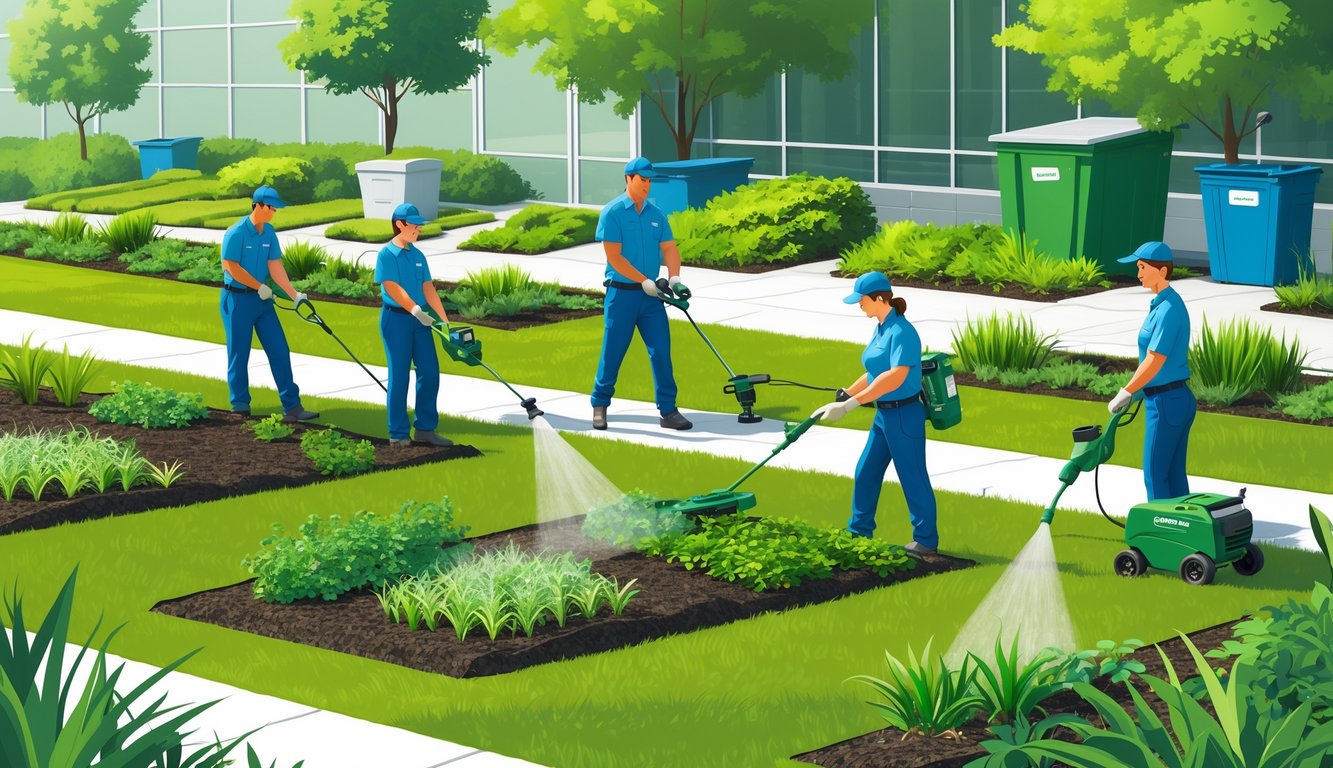
Selective and Non-Selective Herbicide Use
Dandelions taking over the soccer field? Crabgrass eating sidewalks? I’ve lost count of how many pros just dumped their old weed killer routines. These days, just nuking everything green isn’t enough—now you need precision, timing, and a magnifying glass for the label. I miss when it was simple.
Selective Herbicides for Targeted Control
First time I tried a selective herbicide, I was baffled. The label promised it’d only kill broadleaf weeds, not the grass. Then some guy from Oregon State’s extension says, “Timing is everything. Don’t rush, don’t wait.” I watched clover fry with 2,4-D and dicamba—selective herbicides are supposed to only hit what you want, but if the wind shifts, your favorite plants might get toasted too.
Turf managers are all about selective weed control programs. It feels less reckless—like picking a lock, not smashing the door. Lawns look clean, broadleaf weeds vanish, bluegrass keeps growing. But don’t trust the hype—if you ignore the instructions, you’ll regret it.
When to Use Non-Selective Herbicides
Non-selective herbicides? Sometimes you just need the nuclear option. I sprayed glyphosate along fences because nothing else stops Bermuda grass from crawling over everything. It’s overkill, but sometimes that’s the only way. Road edges, gravel, commercial beds before you replant—fine. But if you get sloppy, you’ll toast your favorite plants too.
If you know someone spraying non-selective herbicides on their lawn, please stop them. Non-selective means everything green is toast. Glyphosate, glufosinate, pelargonic acid—pick your poison, but be careful. Perfect for “total kill” zones, but around roses? Disaster. I still have nightmares.
Pre-Emergent Herbicide Innovations
Corn gluten meal. Supposedly pre-emergent, smells like stale corn chips, and either stops weeds cold or does absolutely nothing—depends on the rain, or maybe the phase of the moon, who knows. I keep seeing more pros jump ship for pre-emergents like prodiamine and dithiopyr. They’re supposed to nuke weed seeds before they even get ideas about sprouting. Post-emergents? Forget those for a second. Some sod guy in Illinois bragged, “After my split applications last spring, nothing germinated.” Sure, buddy.
But then, out of nowhere, crabgrass pops up anyway and everyone’s suddenly got a migraine. You need the “right” rate, soil temps in the 50–55°F window (which is, what, two weeks a year?), and if you mow too soon, you just wasted your money. I’ve gone back and forth on granules versus sprays—sprays cover better, but granules are idiot-proof when you’re in a rush. Fewer weeds after a spring dose? I mean, that’s actually a little satisfying, right? Or am I just desperate for wins?
Manual and Mechanical Weed Removal
Why is it always my back that pays the price every June? Nothing like crouching for hours, fingers aching, knees screaming, just to yank out a handful of weeds. And then there’s the gadgets—every year, some new “miracle” tool. Most of the time, it’s the same battle: tough roots, unpredictable soil, and a bunch of half-baked solutions.
Advanced Manual Weeding Techniques
Am I the only one poking the dirt to check for moisture before I even bother with dandelions? Dry soil, and you’re just snapping off taproots for fun—congrats, they’ll be back next week. I’ve watched people swear by cobrahead weeders, Hori Hori knives, whatever. If you don’t dig deep enough to get the whole root, you’re wasting your time.
Somebody once told me vinegar burns work. Maybe on baby weeds, but up against plantain or dock, it’s a joke. Stainless steel weed popper? Now that’s more like it. Not that I have all day to squat in beds, but the right tool actually matters. Even the Manual & Mechanical Techniques handbook admits: angle and depth are everything. Snap a root, and it’s a rerun next week.
Gnats in your face, dirt under your nails, and you’re still chasing green threads. Ridiculous. But, weirdly, sometimes it works if you time it right.
Modern Hoeing Tools and Practices
Why do people mow weeds instead of grabbing a collinear or scuffle hoe? Have they even compared the effort? I know groundskeepers who ditched their stirrup hoes for oscillating wire ones—lighter, faster, wrists don’t hate you. Suddenly, it’s not pure misery.
Blade width? Nobody talks about it, but it’s huge. Thin steel slides under the crust, slices weed crowns before they rob more nutrients. Mulched beds? I use a loop hoe there. Not a Dutch hoe—broad blades get dull fast in mulch. Sharpening every week in peak season isn’t optional.
Cornell’s mechanical control advice says mowing only works for seedlings. Deep-rooted weeds just laugh and come back thicker.
Mechanical Extraction Devices
Clanking, jamming, cursing—pretty much my entire experience with mechanical weed extractors. Hand-pushed weeders with spring grips (Fiskars Xact, garden claws, whatever) promise speed, but clay soil? RIP moving parts, instantly. Pulling up a full taproot? Sometimes it’s just luck.
I’ve trashed way too many “heavy-duty” pullers before finding one with reinforced shafts and a foot plate. Crowded beds? Forget machines—handheld weed wrenches are the only way to yank woody stems. They’re savage on saplings, but you’ll dig craters, so get ready to refill with compost.
Mechanical weed control’s got real limits—not every spot or species plays along. Rocky ground jams everything. Wet soil? Instant mud wrestling. Why do they put tiny collection baskets on these things? No clue.